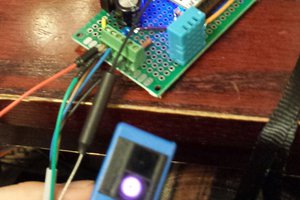NodeMCU ESP8266 is developed based on ESP8266EX WiFi Chip inside ESP-12E Module to easily connect to WiFi with a few steps. The board also integrates IC CP2102, which makes it easy to communicate with the computer via Micro USB to operate the board. And there are available buttons, LEDs for easy learning and research. ESP8266 is widely used in IoT projects, ESP8266 Blynk.
With a small size, flexible board easily links with peripherals to form projects and prototypes quickly.
Technical data
| Control chip | ESP8266EX |
| WIFI | 2.4 GHz supports 802.11 b / g / n |
| Operating voltage | 3.3 V |
| Input voltage | 5V (via USB) |
| Number of I / O pins | 11 (All I / O pins have Interrupt / PWM / I2C / One-wire, except for D0 pin) |
| Number of Analog Input pins | 1 (maximum input voltage of 3.3V) |
| Flash memory | 4MB |
| Security support | WPA / WPA2 |
| Integrated protocol | TCP / IP |
| Programming on languages | C / C ++, Micropython, NodeMCU - Lua |
Pinout ESP8266 NodeMCU

Shematic
References
- Instructions for installing ESP8266 and connecting to Blynk
- Control LED by WebServer using NodeMCU ESP8266
- RGB LEDs using NodeMCU ESP8266 change colors on the Blynk App
- Control the device by voice via Google Assitant using ESP8266, Adafruit, IFTTT
- Control the device by voice via Google Voice Assistant using ESP8266, Blynk and IFTTT
- Monitor temperature and humidity with App Blynk using NodeMCU ESP8266
 Arduino KIT
Arduino KIT
 shepler007
shepler007
 Sean Hodgins
Sean Hodgins

 Bikash Narayan Panda
Bikash Narayan Panda